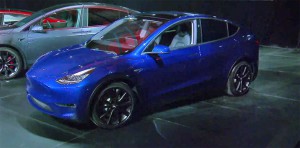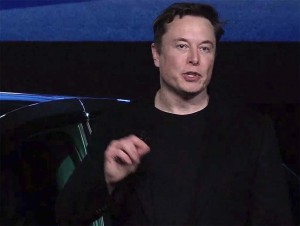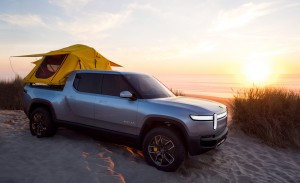
Tesla's next vehicle, the Model Y, will be build alongside its siblings at the company's plant in Fremont, California.
We’ve known for some time that the Tesla Model Y will be going into production late next year, but what hasn’t been clear – to anyone, including Tesla – was where it would actually wind up being built.
CEO Elon Musk has been saying for some time that he hadn’t decided whether to use the automaker’s Fremont, California assembly plant or switch gears and set up a line at Tesla’s Gigafactory battery plant in Reno, Nevada. But, over the weekend, Musk said that a final decision has all but been locked in stone.
“Right now, our default plan actually is to produce the Y at Fremont,” the 47-year-old executive said during an appearance on the “Ride the Lightning” podcast with Ryan McCaffrey. “I was skeptical about whether this made sense at first, but my team convinced me the fastest way to get to volume production is to do the Y at Fremont.”
Exactly how Tesla will pull that off is unclear – as is the question of when it actually will be able to get production underway.
(Tesla cutting prices on China-built Model 3 sedans. Click Here for the story.)
The Fremont plant has a long, strange history. It started out as a General Motors factory before serving as the production center for GM’s joint venture with Toyota, known as NUMMI. The Detroit automaker pulled out of that partnership following its 2009 bankruptcy and Toyota shut it down entirely soon afterwards. The Japanese automaker, which briefly teamed up with Tesla on a short-lived, all-electric RAV-4, ultimately sold it to the battery-car start-up.

Tesla CEO Elon Musk said at the Model Y introduction that where the Model Y would be built hadn't be determined.
Things went reasonably well as Tesla launched the Model S sedan and its first battery-SUV, the Model X. But it stumbled into “production hell” with the launch of the compact Model 3 nearly two years ago, production running at a snail’s pace until mid-2018. That has ramped up substantially in recent months, some reports suggesting Tesla is now pushing well past the 6,000 weekly number it was quoting around the beginning of the year – though there are concerns that sales aren’t supporting the latest increases.
Where and how Tesla would add the Model Y to the plant has apparently been the challenge. While it shares many of the same key components as the Model 3, there are some notable differences that would require significant degrees of flexibility to produce on the same line. Tesla did add a separate line under a tent outside the main plant, something that does create options.
Another question is how much more production could be ramped up at Fremont without major changes. Musk said last month during an earnings conference call that the Model Y could generate twice the volume of the Model 3.
(Click Here for more about “hardcore” belt-tightening Tesla’s Musk says is a must.)
It could always be possible to add another line in Reno later, should demand for the new crossover live up to expectations. Meanwhile, investors and analysts – among others – will be watching closely to see if Tesla learned any valuable lessons from the Model 3 launch.

With competition like the Rivian R1T out there, Musk is looking to make sure Tesla's truck is priced right.
During the “Ride” podcast, Musk let go of some other news tidbits. For one thing, despite the splashy March debut of the Model Y, the CEO said, “I intentionally didn’t go all out with the Model Y reveal because I didn’t want to convince people to buy a Y instead of a 3. If everyone just decided to buy a Y instead of a 3 there would be no customers and there wouldn’t be a Y.”
As with the Model X, the new crossover will deliver less mileage than its comparably sized sedan, he said, somewhere between 8 and 10% less than the Model 3.
Musk also has been downplaying any base-priced version of the Model Y, clearly a lesson learned from the backlash Tesla got for long failing to deliver a $35,000 Model 3. The initial model will come in around $48,000, with a lower-range, 230-mile version to eventually follow at around $39,000.
Separately, Musk gave a hint during the podcast as to where he sees pricing for the upcoming Tesla pickup.
(Musk cheers as Tesla closes in on production record. Click Here for the story.)
“We don’t want it to be really expensive. I think it’s got to start at less than $50,000, it’s got to be like $49,000 starting price, maximum, ideally less. It’s got to be something that’s affordable,” he told McCaffrey. “There will be versions of the truck that are more expensive, but you’ve got to be able to get a really great truck for $49,000, or less.”
